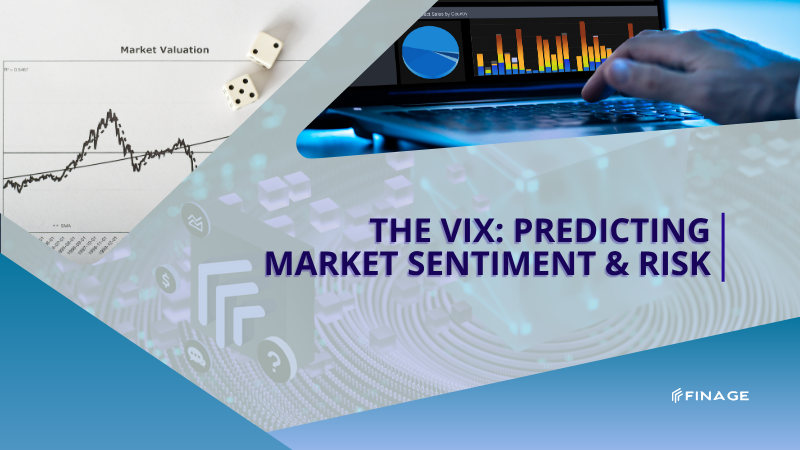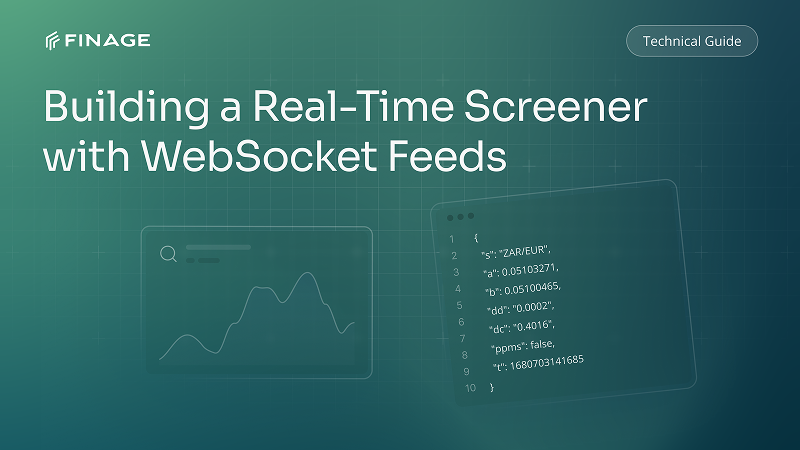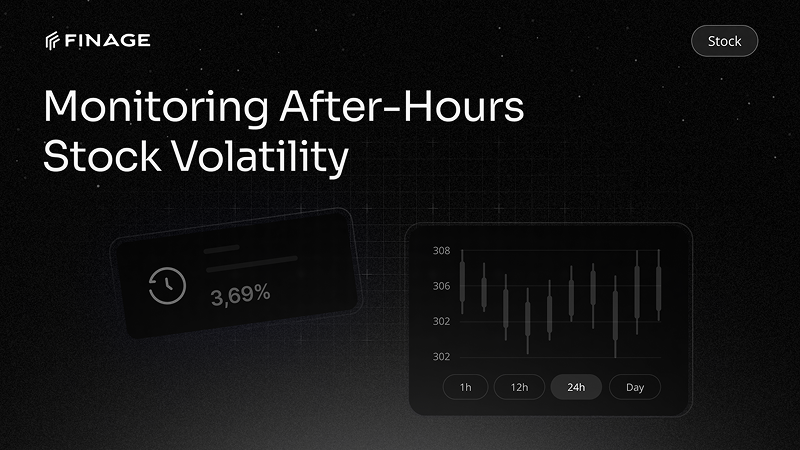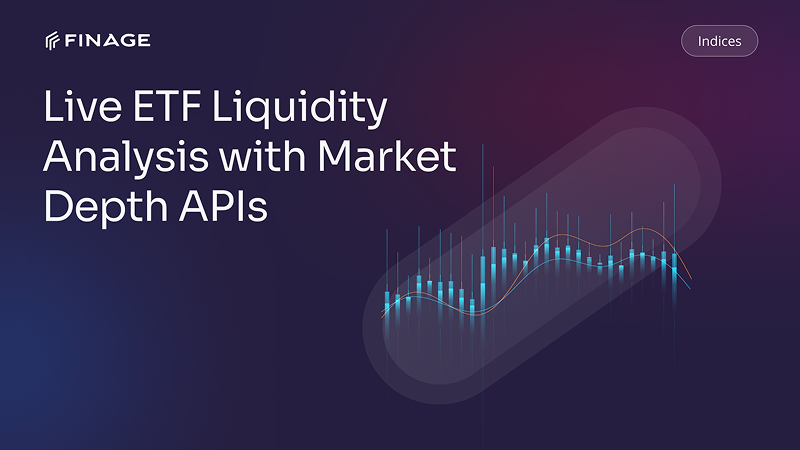The CFD VIX: Predicting Market Sentiment and Risk
5 min read • May 28, 2025

Introduction
When people talk about market nerves, they often turn to one specific number: the VIX also known as the Volatility Index. It offers a snapshot of how uncertain or calm investors are feeling about the stock market in the short term. If you have seen this thing popping up during market chaos, it can be a valuable addition to your toolkit, especially if you’re using a Market Data API or building custom platforms using financial data feeds.
So today let’s discuss what the VIX is. As well, let’s see how it works and why it’s become one of the most watched indexes when it comes to market fear and volatility while predicting risks.
Contents:
- What Is the VIX and What Exactly Does It Measure?
- Why Investors Watch the VIX
- Context Is Key
- Things That Matter
- Hedging Risk
- Speculating on Volatility
- Measuring Sentiment
- The VIX and Data APIs
- Key Tools You Should Use with VIX
What Is the VIX and What Exactly Does It Measure?
The VIX reflects how much movement investors expect over the next 30 days. It doesn’t tell you which direction the market might move, for example, up or down, but you can get a sense of how big those moves could be. Basically, the logic is simple:
- bigger expected swings mean more uncertainty
- and more uncertainty often signals worry
The VIX is officially known as the Chicago Board Options Exchange Volatility Index. Actually, if you quickly google, you’ll find out that it was developed by the them in 1993. It's their proprietary index and one of their most well-known financial products. As we mentioned above, it measures expected volatility in the market and it’s often called the “fear gauge” because it reflects how uncertain investors are about the near-term future.
It’s calculated by the them using index options. The more traders are paying for protection (options) against a fall in the index, the higher the VIX goes. The calculation is based on real-time data from the options market, which makes it highly responsive to market sentiment.
Why Investors Watch the VIX
If the VIX climbs sharply, it typically suggests investors are bracing for turbulence. Maybe it’s:
- economic data
- a political event
- just general unease
However, rising numbers often go hand in hand with falling stock prices. On the flip side, when the VIX drifts lower, it points to a calmer mood. That doesn’t guarantee gains, but it usually means there’s less concern about dramatic drops in the near future.
Context Is Key
There’s no official line that separates a “low” VIX from a “high” one. During periods of shock (like the 2020 pandemic or black swan events), it surged above 80. In calmer periods, it has dropped below 10. But most of the time, it sits somewhere in between.
Rather than fixating on a single number, you will see that it is more useful to compare the VIX to where it’s been recently. Has it jumped from 15 to 25 in the past few weeks? That shift could be more telling than the number itself.
Things That Matter
Let’s check some numbers and examples. As of May 2025, the VIX has hovered around 13-14, well below its long-term average of about 19. This usually means the market’s pretty calm, at least until the next big shock hits. But there are a few moments you really need to keep in mind:
- During the COVID-19 panic, the VIX shot up to 82.69, so it is actually the highest it’s ever been. That tells you just how intense the fear was back then.
- On average, since it was introduced in 1990, the VIX has hovered around 19.5. So anything way above that? You’re looking at a seriously nervous market.
Hedging Risk
If you’re managing a large portfolio and see the VIX rising, it’s a red flag. Many investors use VIX options or ETFs like VXX and UVXY to hedge against sudden drops in stock prices. It’s kind of like buying insurance when you feel a storm coming.
Speculating on Volatility
Some traders don’t just use the VIX for protection, they trade it directly. VIX futures and ETFs allow for speculation purely on the direction of market volatility. This is high-risk stuff, but it can pay off big during unpredictable events.
Measuring Sentiment
A low VIX usually signals confidence or complacency. A high VIX tells you people are nervous or flat-out scared. If you’re building tools to track sentiment, you should integrate a Market Sentiment Data API into your platform.
The VIX and Data APIs
If you’re using a Real-Time Market Data API or building a strategy around options or indices, tracking the VIX should be part of your toolkit. Here’s how data APIs come into play:
- You can use a Real-Time Stock Data API or Options Chain Data API to monitor options prices
- Next, you can combine this with a Market Sentiment Data API to compare fear levels with other indicators like put/call ratios or volume spikes
- You can train machine learning models, for example, pull in a Historical Market Data API or Historical Stock Price API to backtest how your strategies perform in high-VIX environments
- For developers working in Python, you can check out our guide on how to integrate stock market data API with Python tools and WebSocket feeds
Key Tools You Should Use with VIX
If you’re working on quant strategies, portfolio management software or algotrading bots, these are the relevant data feeds you should pair with VIX:
- Real-Time Financial News API
- Technical Indicators Data API
- Economic Calendar Data API
- Free Stock Data API for Backtesting
- Crypto Price Data API with WebSocket integration
Final Thoughts: Not a Perfect, But Still Crucial
You have to be aware that while the VIX is a powerful signal, it’s not magic. It doesn’t predict direction, just volatility. The VIX can rise while the market is going up, especially if gains are sharp and speculative.
Also, keep in mind that the VIX only reflects 30-day implied volatility. If you’re a long-term investor, don’t overreact to short-term spikes. During extreme events, bid/ask spreads can explode and implied volatilities might become unreliable. You need to be prepared with proper solutions. So yeah, the VIX is not just some finance trend, it’s one of the fastest ways to get a pulse on the market’s stress levels.
P.S: Finage provides only CFD base Indices.
You can get your Real-Time and Historical Stocks Data with a Stock Data API key.
Build with us today!
Claim Your Free API Key Today
Access stock, forex and crypto market data with a free API key—no credit card required.

Stay Informed, Stay Ahead
Finage Blog: Data-Driven Insights & Ideas
Discover company news, announcements, updates, guides and more


